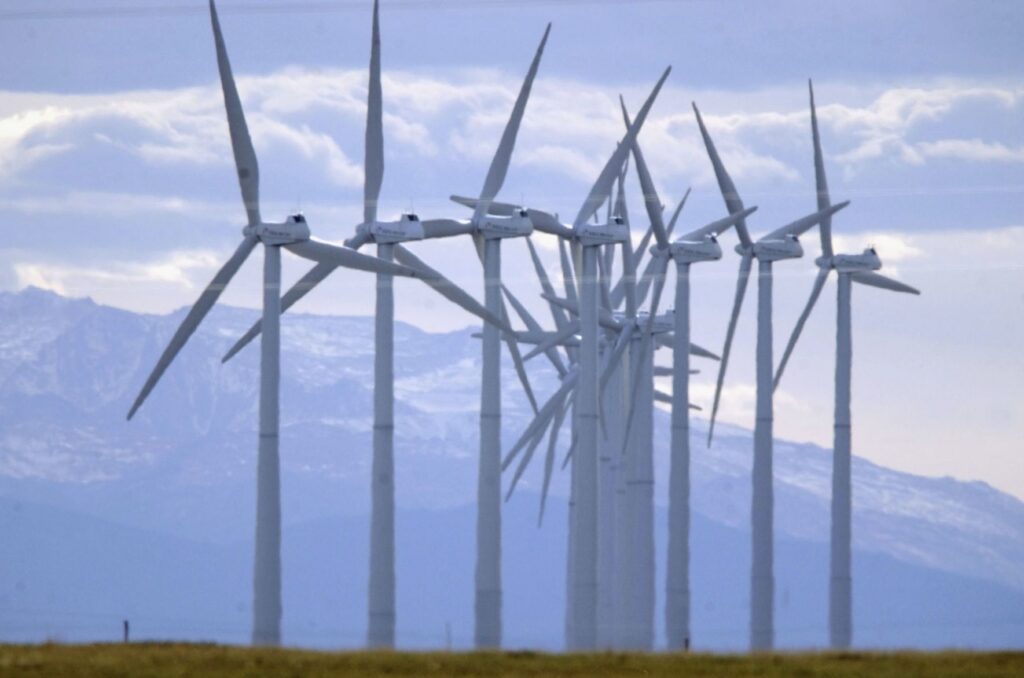Why California was spared and Arizona hammered: A brief history of Colorado River agreements

Tuesday’s announcement by the U.S. Bureau of Reclamation that it would require Arizona and Nevada to reduce their annual allocation of water from the Colorado River came as no surprise to most water experts.
The reductions announced by Reclamation Commissioner Camille Touton have been part of a long-standing agreement, known as the interim guidelines, since 2007.
The Colorado River supplies water to 40 million people in two countries, seven states, 29 federally recognized Indian tribes, and 4 million acres of farmland. But its ability to provide that water faces a serious challenge following 22 years of drought and a drier climate that reduced its annual flow from 16.4 million acre-feet (MAF) to around 14.5 MAF on average since 2000.
Actions by the states – they could have banked surplus water in its two reservoirs during the good years but didn’t, and they drained reservoirs in the bad years – left Lake Powell and Lake Mead dropping to critical low levels, according to experts.
The 2007 interim guidelines were crafted by the seven states on the Colorado River basin and by the reclamation bureau, part of the U.S. Department of the Interior, in response to eight years of drought taking a toll on the amount of water available from the river, which starts high up in Rocky Mountain National Park and flows 1,450 miles to the Gulf of California in Mexico.
Under the 1922 Colorado compact, the river was expected to carry about 16.4 million acre-feet of water every year. The compact divided up the seven states into two basins: the upper basin (Colorado, Wyoming, Utah and New Mexico) and the lower basin (Arizona, Nevada and California, and later, Mexico). Playing it safe at the time, the agreement split 15 million acre-feet (MAF) equally between the upper and lower basins, although the upper basin states often point out they don’t use their full allocation. Native American tribes in the southwest were never included in those negotiations; they were expected to get their water from the allocations that went to the states. The dividing lines were Lake Powell, the water bank for the upper basin states, and Lake Mead, the bank for the lower basin states.
That agreement, and later ones, formed what’s known as the Law of the River.
The Law worked reasonably well for 77 years. In those ensuing years, two dams were built to supply hydroelectric power to the West – Hoover Dam on Lake Mead, which opened in 1936 and became instrumental in persuading California to agree to the 1922 compact; and, Glen Canyon Dam, on Lake Powell, which opened in 1963.
Then drought hit, beginning in 1999, and the river slowly began to carry less water.
After six years, the states and the reclamation bureau began to think about the future, and came up with a plan to deal with the drought, with water cuts meted out to the lower basin states, Arizona and Nevada first, because their water rights are junior to California’s, as well as to the upper basin states.
The 2007 interim guidelines set up a series of tiers for when water levels at Lake Mead drop to critical low levels. Those tiers would dictate cuts in water allocations to the lower basin states. Tier 1 goes into effect when Mead drops below 1,075 feet in elevation. Tier 2 goes into effect when Mead drops below 1,050 feet. Tier 3 would go into effect at 1,025 feet. Those tiers were based on the effect of declining water levels on the ability of Hoover to generate electricity.
In 2019, another round of agreements, known as the Drought Contingency Plan, would dictate just how water would be cut from the lower basin states should the shortages at Mead reach those levels.
Mead reached the Tier 1 shortage last year, and that triggered total cuts of 512,000 acre-feet to Arizona, about 18% of its 2.8 MAF allocation. Nevada’s allocation of 300,000 acre-feet was cut by 13,000 or about 3.7%. Mexico’s 1.5 MAF allocation was reduced by 5% or about 75,000 acre-feet.
Tier 2 was what Touton announced Tuesday, as bureau estimates say Mead will drop to 1,048 feet, based on a 24-month study, by Jan. 1, 2023. That means a cut to Arizona of another 80,000 acre-feet , another 4,000 to Nevada and a 7% reduction to Mexico, or 105,000 acre-feet. The total reductions for Tier 1 and 2 are 721,000 acre-feet, with Arizona’s Central Arizona project shouldering almost all of Arizona’s largest cut of 592,000 acre-feet.
That cut is a far cry from the 2 to 4 MAF Touton insisted was needed to save Powell and Mead’s hydropower in a June 14 hearing before the U.S. Senate Natural Resources Committee.
California, for now, has been spared cuts under the 2007 interim guidelines and the 2019 DCP, but under a Tier 3 shortage, the state would take less water from the guideline’s Intentionally Created Surplus (ICS) Program, which creates water credits in Mead through conservation measures and which could be reclaimed at some point in the future. California is also part of a lower basin plan, known as 500+, signed last December, that would keep about a million acre-feet of water in Mead for the next two years through conservation measures and at a cost of $200 million, split between the states and the federal government.
The interim guidelines are in effect until Dec. 31, 2025 and are now the subject of negotiations among the upper and lower basin states.





